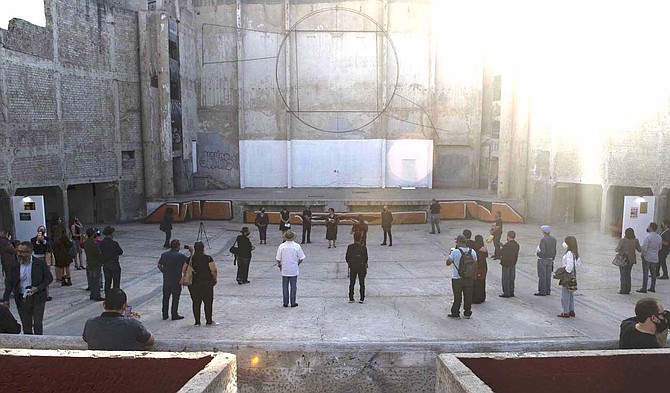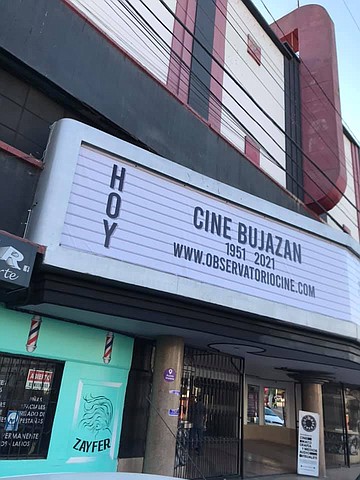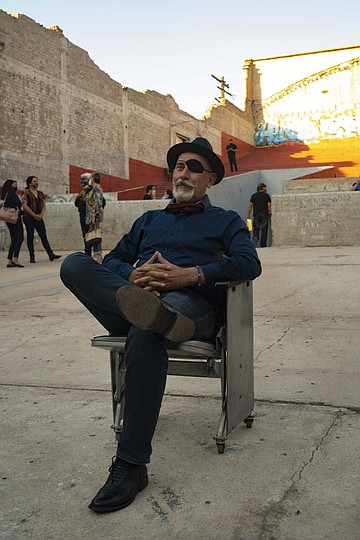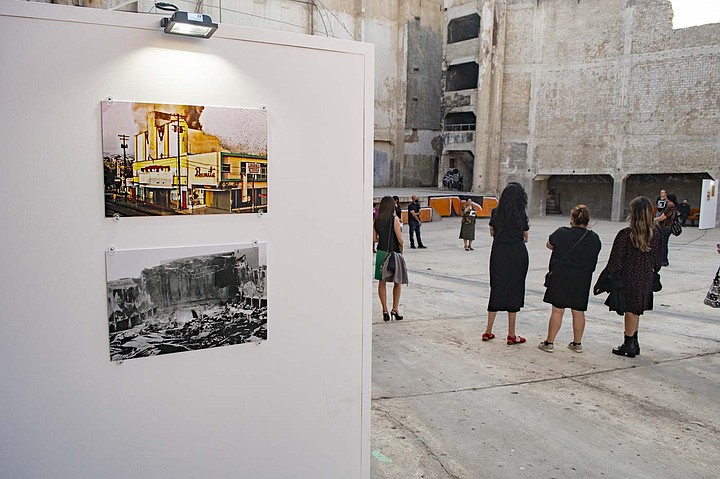 Facebook
Facebook
 X
X
 Instagram
Instagram
 TikTok
TikTok
 Youtube
Youtube

On July 7 the Bujazan Cinema, one of the most important cinema tethers throughout Mexico, had its 70th anniversary. At the celebration, local filmmakers announced the opening of a Film Studies Hub in the theater.

This colossus, built in 1951, brings to Tijuanenses memories of the growing new city that Tijuana was becoming at that time. Ricardo Figueroa Hauren, 74, was manager of the theater for four years.
“I’m originally from Nayarit; there I grew up and studied until my high school, but before I was 18, I came to Tijuana to find a job. At first I couldn’t find work because of my age, but a couple of years later I got a job at the theater.”
He started working in 1968. He got films from Mexico City and sent them to Mexicali, Tecate, and Ensenada and then back to the capital. After some years he became manager and worked as such for four years.
At that time in Tijuana U.S. dollars were the only currency used, and tickets for adults cost 45 cents and 23 cents for kids. According to Figueroa, the theater opened on weekends at 9:30 am with a national newscast and closed at 1:30 am.
“It was always packed. On Sundays the line to get in was at least one block long; sometimes we had to stop selling tickets. Our full capacity was 2225 persons – get that picture! Now people are used to 400 or 500 max in today’s cinemas.

“Usually in a Sunday we sold around 6,000 tickets”.
Victor Soto Ferrel, a University of Baja California scholar and founder of the first film club in Tijuana, said that at the time going to watch a movie was the favorite Sunday routine of families, and it benefited all kinds of other businesses around the cinema.
“Nowadays theaters are built inside malls, which increases money spent by families when going to watch a movie. Before, families could eat from street vendors."
Figueroa still remember having watched The War of the Worlds of 1953 and When Worlds Collide of 1951 as a young man before working there, and said that just to see that massive facility decorated with art deco was so impressive. In his hometown cinemas were not as big as the ones in Tijuana.
“I spent the greatest years of my life working in the theater. I actually turned 21 working there, and it was such an experience.
"When I arrived to the opening of the Film Studies Hub, all kind of great memories came to my mind, but also a feeling of sadness when I saw the conditions of the place where my office was, and to see the theater without a ceiling and in such terrible abandoned conditions.”

All the cinemas on the downtown started to decline in in the 80s when, according to scholars like Victor Soto Ferrel, VHS was introduced. And due to border closures, more people from Tijuana started getting VHS systems for their houses. Plus the introduction of theaters into malls changed the whole social environment.
In 1994 the Bujazan Cinema caught fire without any explanation. The theater hosted several symbolic celebrations of the city's July 11 anniversary which is 4 days after the anniversary of the cinema.
"As I said, it's sad to see it like is it now, but I'm confident that new generations won't let it die silently. It's so good this Film Studies Hub is working because this cinema was and still is an important part of my life."


On July 7 the Bujazan Cinema, one of the most important cinema tethers throughout Mexico, had its 70th anniversary. At the celebration, local filmmakers announced the opening of a Film Studies Hub in the theater.

This colossus, built in 1951, brings to Tijuanenses memories of the growing new city that Tijuana was becoming at that time. Ricardo Figueroa Hauren, 74, was manager of the theater for four years.
“I’m originally from Nayarit; there I grew up and studied until my high school, but before I was 18, I came to Tijuana to find a job. At first I couldn’t find work because of my age, but a couple of years later I got a job at the theater.”
He started working in 1968. He got films from Mexico City and sent them to Mexicali, Tecate, and Ensenada and then back to the capital. After some years he became manager and worked as such for four years.
At that time in Tijuana U.S. dollars were the only currency used, and tickets for adults cost 45 cents and 23 cents for kids. According to Figueroa, the theater opened on weekends at 9:30 am with a national newscast and closed at 1:30 am.
“It was always packed. On Sundays the line to get in was at least one block long; sometimes we had to stop selling tickets. Our full capacity was 2225 persons – get that picture! Now people are used to 400 or 500 max in today’s cinemas.

“Usually in a Sunday we sold around 6,000 tickets”.
Victor Soto Ferrel, a University of Baja California scholar and founder of the first film club in Tijuana, said that at the time going to watch a movie was the favorite Sunday routine of families, and it benefited all kinds of other businesses around the cinema.
“Nowadays theaters are built inside malls, which increases money spent by families when going to watch a movie. Before, families could eat from street vendors."
Figueroa still remember having watched The War of the Worlds of 1953 and When Worlds Collide of 1951 as a young man before working there, and said that just to see that massive facility decorated with art deco was so impressive. In his hometown cinemas were not as big as the ones in Tijuana.
“I spent the greatest years of my life working in the theater. I actually turned 21 working there, and it was such an experience.
"When I arrived to the opening of the Film Studies Hub, all kind of great memories came to my mind, but also a feeling of sadness when I saw the conditions of the place where my office was, and to see the theater without a ceiling and in such terrible abandoned conditions.”

All the cinemas on the downtown started to decline in in the 80s when, according to scholars like Victor Soto Ferrel, VHS was introduced. And due to border closures, more people from Tijuana started getting VHS systems for their houses. Plus the introduction of theaters into malls changed the whole social environment.
In 1994 the Bujazan Cinema caught fire without any explanation. The theater hosted several symbolic celebrations of the city's July 11 anniversary which is 4 days after the anniversary of the cinema.
"As I said, it's sad to see it like is it now, but I'm confident that new generations won't let it die silently. It's so good this Film Studies Hub is working because this cinema was and still is an important part of my life."
Comments